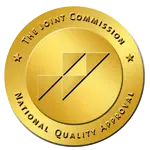Heroin addiction represents a significant global challenge, impacting millions of individuals and their families across the world. The scale of the problem is underscored by alarming statistics from the World Health Organization, which reported that in 2019, approximately 600,000 deaths were attributable to drug use worldwide. Notably, close to 80% of these deaths were related to opioids, including heroin, with about 25% of those deaths caused directly by opioid overdose. These figures highlight the critical urgency of addressing heroin addiction and the devastating impact it can have not just on individuals but on communities and health systems globally.
At Pathways Recovery Center, we are deeply committed to being a part of the solution to this pervasive issue. Our residential inpatient facility is designed to offer a supportive and nurturing environment for individuals grappling with the challenges of substance abuse. By providing access to essential tools and resources, we aim to empower our residents to overcome heroin addiction. Understanding what heroin involves, including recognizing its appearance—which raises the question, “What does heroin look like?“—is crucial for early detection and effective intervention. Our focus on understanding and managing heroin withdrawal symptoms is a key component of our comprehensive approach to recovery. Through personalized care, medical detox, therapeutic interventions, and aftercare planning, we strive to guide our residents toward a journey of healing and long-term sobriety, addressing the pressing need to reduce the global burden of opioid-related deaths.
Heroin withdrawal represents the body’s reaction to the absence of a substance upon which it has become dependent. This process triggers a series of both physical and psychological symptoms that manifest when an individual who has been regularly using heroin either stops their use abruptly or significantly reduces their intake.
Withdrawal symptoms arise as the brain and body attempt to recalibrate and function without the presence of heroin. This adjustment process is marked by intense craving for the drug, along with a host of other symptoms that can range from mild to severe, depending on the duration of use, the amount of drug used, and individual health factors. Recognizing these symptoms not only helps in acknowledging the presence of an addiction but also serves as a critical step towards seeking help and embarking on the journey to recovery.
Understanding the physiological and psychological aspects of heroin withdrawal is crucial for individuals and their loved ones to comprehend the complexities of heroin addiction. It also highlights the importance of professional medical intervention during the detoxification process, as withdrawal can be not only extremely uncomfortable but also potentially life-threatening without proper support and care.
In the context of understanding addiction and its treatments, it’s essential to clarify common misconceptions, such as whether is heroin a stimulant or not. Contrary to some beliefs, heroin is classified as an opioid, which is primarily used for its pain-relieving and euphoric effects, rather than a stimulant, which increases alertness and energy.
Additionally, the broader societal impact of opioid dependence, including heroin, cannot be overstated. Research has shown that the economic burden on society, through increased healthcare costs, unemployment rates, absenteeism, and premature mortality, is significant. In some countries, the consequences of opioid dependence can cost, on average, 0.2% to 2.0% of a country’s gross domestic product. This fact underscores the importance of addressing opioid addiction not only from a health perspective but also as a socio-economic challenge.
The experience of heroin withdrawal is deeply personal and can significantly vary among individuals, influenced by factors such as the duration of heroin use, the dosage, and individual physiological differences. Reflecting on the widespread impact of this issue, 2018 data revealed that approximately 0.5 million people were identified with a heroin use disorder. This statistic underscores the prevalence of heroin addiction and the critical importance of recognizing and understanding withdrawal symptoms as part of the broader effort to address this public health crisis.
The array of physical symptoms associated with heroin withdrawal vividly illustrates the drug’s profound impact on the body. Symptoms include:
Heroin withdrawal also encompasses a range of psychological symptoms, which can be as debilitating as the physical ones:
These symptoms can manifest as early as a few hours following the last heroin use, typically peaking within 24 to 48 hours. The severity and duration of withdrawal symptoms can vary widely among individuals. It has been observed that the acute phase of heroin withdrawal can last for approximately 7 to 10 days, during which symptoms gradually lessen in intensity. However, some individuals may go through a protracted withdrawal syndrome, experiencing symptoms that persist for weeks or even months. This variation in the withdrawal experience highlights the necessity for comprehensive treatment and support during the recovery process, catering to the unique needs of each individual undergoing withdrawal.
Several factors, including the level of dependency, frequency of use, and individual health conditions influence the process and timeline of heroin withdrawal. Despite these variances, the withdrawal timeline follows a generally predictable pattern, characterized by three main phases.
6-12 hours after last use: The onset of withdrawal symptoms typically begins within hours after the last dose of heroin, marking the initial phase of the detoxification process. Research indicates that these early symptoms are a direct result of the body starting to adjust to the absence of the drug.
1-3 days after last use: Symptoms reach their peak intensity during this phase. According to data from the Substance Abuse and Mental Health Services Administration (SAMHSA), over 80% of individuals undergoing heroin withdrawal report experiencing severe symptoms during this acute phase, highlighting the critical need for medical supervision and support during this period.
1 week after last use: After the peak, symptoms generally start to decrease in severity. Most individuals find that the most intense physical symptoms subside within a week. However, psychological symptoms and cravings may persist, requiring ongoing support.
Beyond the first week: While many may see an end to the acute phase of withdrawal, a significant minority of individuals face a more extended challenge known as Post-Acute Withdrawal Syndrome (PAWS). Characterized by mood swings, sleep disturbances, and persistent cravings, PAWS highlights the enduring nature of opioid recovery, including heroin addiction. These symptoms can last for several months and, in some cases, extend up to a year or more, emphasizing the necessity of a comprehensive approach to recovery. PAWS illustrates the complex, multifaceted journey of overcoming opioid addiction, stressing the critical need for long-term support and tailored treatment strategies. The recognition of PAWS as a significant aspect of the recovery process underscores the importance of ongoing care and the establishment of robust support networks to assist individuals through the entirety of their recovery journey.
Detoxification, commonly referred to as detox, represents a pivotal initial step in the journey towards recovery from heroin addiction. This critical phase involves the body’s natural process of eliminating toxins, including narcotics like heroin, from its system. The complexity and potential dangers associated with heroin withdrawal underscore the essential role of medical detox, particularly within specialized facilities such as Pathways Recovery Center.
Heroin withdrawal is not only profoundly uncomfortable but can also pose serious health risks. Symptoms such as severe dehydration from vomiting and diarrhea, cardiovascular issues, and the potential for relapse into use due to intense cravings make supervised detox a safer option. The American Society of Addiction Medicine (ASAM) emphasizes that withdrawal from opioids, including heroin, can be life-threatening in some cases, highlighting the need for medical oversight.
Within a medical detox setting, healthcare professionals play a crucial role. They monitor vital signs, manage withdrawal symptoms through medication, and provide emotional support. For instance, medications like buprenorphine or methadone can be used to ease withdrawal symptoms and cravings, significantly reducing the discomfort and risk associated with detox. According to the National Institute on Drug Abuse (NIDA), medication-assisted treatment (MAT) has been shown to increase patient survival, decrease illicit opiate use and other criminal activity among people with substance use disorders, and improve the chances of gaining and maintaining employment.
The structured support provided during medical detox can significantly enhance the likelihood of a successful transition into ongoing recovery programs. Data from the Substance Abuse and Mental Health Services Administration (SAMHSA) indicates that individuals who undergo a medically supervised detox are more likely to remain in treatment compared to those who do not receive such support. This structured beginning lays a solid foundation for the comprehensive treatment approach necessary for long-term recovery from heroin addiction.
At Pathways Recovery Center, we offer a compassionate and comprehensive treatment program for individuals experiencing heroin withdrawal symptoms. Our approach includes:
Choosing Pathways Recovery Center means selecting a path toward healing and recovery in a supportive, nurturing environment. Our dedicated team of professionals is committed to providing the highest quality care tailored to the needs of each individual. We believe in treating not just the symptoms of addiction but the whole person, offering a pathway to a healthier, substance-free life. If you or a loved one is struggling with heroin addiction and withdrawal symptoms, we are here to help. Contact us today to learn more about our programs and how we can support you on your journey to recovery.








